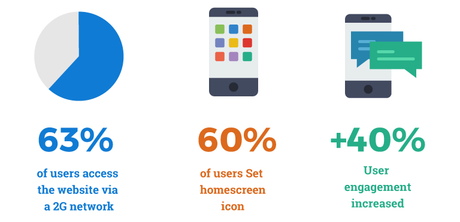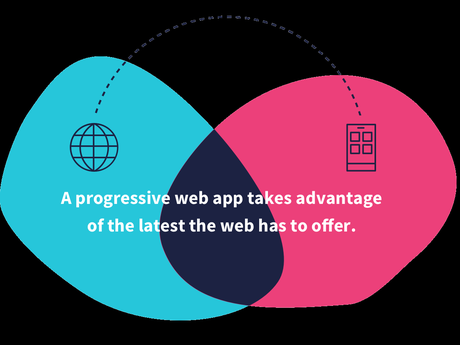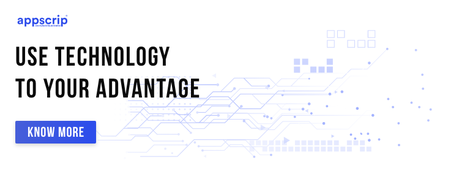This growing support for PWAs is being driven by demands from leading brands looking to make the most of their capabilities. Joining the likes of Facebook and Pinterest, Twitter recently invested heavily in making its main site a responsive Progressive web app to create a faster user experience with an enhanced interface.
Similarly, media powerhouses such as the BBC, The Washington Post, and Forbes, also have debuted PWAs to deliver their content more seamlessly across users and various device types, from desktops to mobile phones.
Problems with Native Apps
While installing any Android/iOS apps we go through these problems :
- Is this app worth downloading?
- Do I have enough space?
- My available data is not sufficient.
One recent survey shows that people are turning away from Android/iOS apps, because not all app experiences are satisfying or worthwhile. Some people simply don't want any more apps on their phone, some even hesitate to download any app.
If you take a look at the apps installed on your mobile right now there might be at least a dozen apps that you do not use regularly. Sometimes apps only works good when the phone has an active internet connection.

The irony is that most of the apps have a fully responsive website performing the same functions.
So why waste your precious disk space and your internet data on your smartphone by installing the native app? The average size of apps that we install from play store/app stores would range from 30-200MB. Moreover, these app needs to updated every week! But Progressive Web Apps are within some KBs and are automatically updated.
So why are top brands making the switch to Progressive Web Apps?
Rising consumer expectations: Consumers have little patience for brands that deliver mediocre digital experiences. With an abundance of options at their fingertips, customers can quickly move on to another company if they experience underwhelming brand interactions. Both Pinterest and Starbucks saw a notable lift in engagement metrics when they launched PWAs.
Pinterest had a 60% jump in mobile engagement with faster page loads, while Starbucks' PWA was built to manage ordering over the web and is now favored among customers over the coffee company's native app.
 Native action in the web browser:
Native action in the web browser: PWAs offer a consistent and responsive experience across all devices.
They load like a typical website but with several advanced capabilities of native mobile apps, including the ability to be added to device home screens with one touch, to work offline, and to enable push notifications.
They also offer advantages of websites, such as discoverability by search engines and the ability to be accessible from all modern web browsers.
Reduced resources and spending through simplified coding:PWAs can appear alongside native mobile apps in the App Store and Google Play.
PWAs require only one code base to deliver a website and mobile app-like experience across devices and browsers.
This means planning for, designing, developing, and maintaining both a website and mobile app-like experience requires only one team, one tech stack, one test strategy, and one digital product roadmap.
Desire to build today for tomorrow's innovations:PWAs not only minimize product strategy, design, development, and maintenance costs, they also save organizations money by enabling faster deployment of new features and bug fixes.
Innovative brands recognize that technology is evolving at an unprecedented pace, and to avoid rapid cycles of strategy, design, development, and re-build for digital solutions, they need to deploy more future-forward technologies.
Progressive Web Apps are inherently flexible and constantly evolving to meet the latest device and technology feature enhancements.
If you rewrite a legacy website or native mobile application as a PWA today, it will work as intended for years to come.
PWAs are built for change, meaning organizations can stop investing in one-off websites and mobile apps that will inevitably require redesigns to meet changing audience demands and technologies.
With the continued emergence of PWAs, more consumers will simultaneously reap the rewards of applications that continually adapt to meet evolving customer needs and expectations.
Also Read | True Advantages Of Custom Software Development

